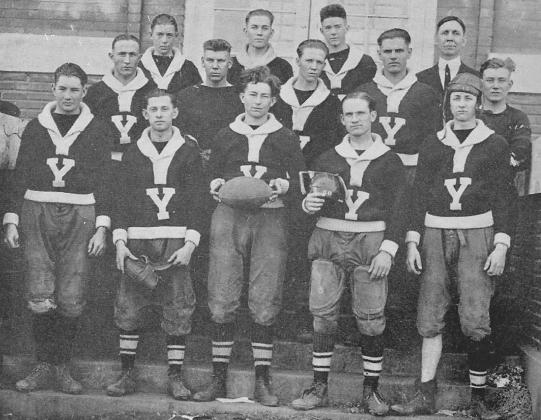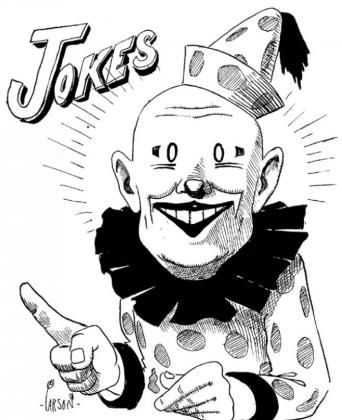One of Yukon’s early native sons, Glen Carson had a bigger impact on the world than most realize.
Carson’s artistic talents contributed to a makeover of the red Mobilgas Pegasus logo. Known commercially since about 1911, the image was used in the U.S. and abroad.
In 1931, Mobilgas trademarked the image, so it became synonymous with Mobilgas products. In the Japanese Mobilgas division, the Greek mythological character gained its red color.
During the 1930s, Pegasus evolved with a more graphic and cleaner image. Commercially, the red Pegasus had always flown right to left. But in the upgrade process, stories are Carson was responsible for changing Pegasus so the image flew left to right.
Carson attended Yukon’s early schools. He played on the Yukon High School football team during his sophomore, junior and senior years. As a senior, Carson lined up at tackle.
During his youth, Carson was known for all sorts of artwork. He painted signs for Yukon merchants.
His art peppers various editions of the “Javelin,” the Yukon schools’ early yearbooks. After graduating with the class of 1923, Carson headed to Florida where he worked in the Miami Tribune art department.
He later painted signs during the oil boom in Smackover, Arkansas. Carson joined the General Outdoor Advertising Company in Memphis, Tennessee. Somewhere in all of that, he was instrumental in the Mobilgas Pegasus logo makeover.
Carson’s parents, Sallie and Sam Carson, arrived in Yukon in the 1890s. An early blacksmith, Sam Carson was also Yukon’s first machinist.
He sold his property to the Kroutils and Dobrys, so they could build their Yukon Mill and Grain Co. business office building at Elm and 3rd Streets, where it remains today. Sam Carson moved his business and the family home to “Carson Corner,” the 15 acres on the southwest corner of Main Street and Cornwell, where 10 W Main is located today. Glen Carson was born on Carson Corner.
While working in Memphis, Glen Carson married Louise Williams. In the 1930s, they moved to Oklahoma City. While on scaffolding, he often painted the iconic girls in the Coca-Cola company’s ads on buildings, and crowds would gather and watch.
Glen Carson died in a car accident in 1941. He was only in his 30s. The Carson family still owns Carson Corner.



